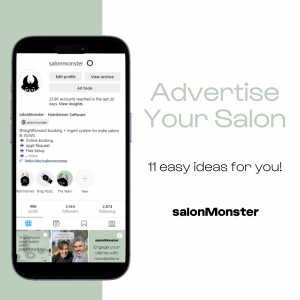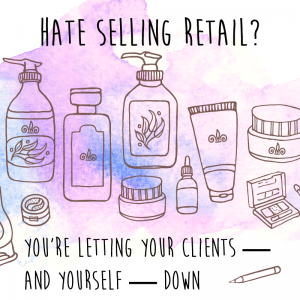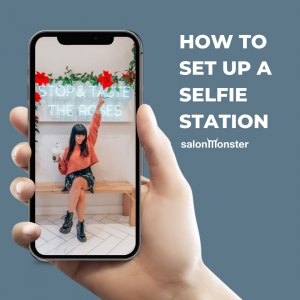How to give constructive feedback that doesn’t suck.
Good constructive feedback is a powerful way to help others reach their best in the salon and in life. Sadly, most of us are really bad at it and end up offending each other and looking like jerks. It’s a shame because feedback from our peers is one of the best ways we can learn. Fortunately, with some practice you can learn how to give constructive feedback that doesn’t suck.
First let’s make one thing clear: Really great constructive feedback can only come from a genuine desire to help. It is a way to empower others, to release their potential. It is never about blaming, criticising, demeaning or insulting.
So, there’s a “situation” in the salon and you need to address it. What should you do?
Before you offer feedback, step back and evaluate the situation objectively. It’s easy to get blinded by emotions and overlook other factors. Ask yourself if the person you have an issue with was provided with the right resources for success, such as:
- Appropriate training
- The right tools
- All the up-to-date information
- Enough time
Sometimes a situation is caused by something other than what you originally thought. If this is the case, work to remedy it and explain to the team member what you are doing to resolve it for them in the future.
When you offer feedback, keep it respectful, specific, objective, personalized and actionable.
Respectful
When giving feedback, always treat people with respect. This is not an attack, so don’t make it personal. Focus instead on the situation and how it could be improved.
For feedback to be truly effective respect must go both ways. To take your advice to heart, the person receiving it needs to trust you. If they don’t trust you, building that trust is your first step. Otherwise, why would they listen to you? One nice way to build trust is to ask permission: “May I offer a suggestion that may make this easier for you?”
Specific
Vague feedback can lower people’s motivation and their ability to learn. For example, take a statement like, “Well you really did an amateur job of that colour!” This isn’t going to help because the stylist doesn’t know what they need to change.
Instead, give them specific details: “It looks like you’re getting a bit of bleeding around the edges on some of your foils. I had the same problem when I switched to that brand. Would you like me to show you how I do it now?”
Objective
Good feedback is objective and focuses on facts, not emotions and opinions. It’s important to separate your personal preferences from the facts and keep your language positive.
Subjective comments like “I don’t like the style of that last cut you did” tend to make people angry and defensive. Try sharing a more objective observation: “I noticed your last client has quite a beautiful round face. The Sassoon class I recently did suggested that short cuts often work well on that face shape. Have you thought of suggesting that to your client?”
Actionable
Only give feedback on things people can take action on. There’s no point in offering feedback if nothing can be done. That’s just being mean. Offer ideas on how they can improve. Help guide them without being bossy, as that can lead to resistance. Share a relatable example based on your experience to help demonstrate the concept:
“It sounds like your last client was a bit of a complainer. I had a really challenging client like that who used to drive me crazy. My mentor suggested that she might have control issues, so I focussed on giving really thorough consultations at the beginning of each appointment to show her I was listening. When I showed her some compassion it really changed our relationship. Maybe that would help with your client. If it doesn’t, it might be time to look at firing her.”
Personalized
Always try to stand in their shoes and see it from their perspective. Sometimes the situation will look quite different from the other side and your feedback may not be relevant or appropriate.
Everyone has different learning styles and interpersonal skills so tailor your approach. Direct folk may prefer that you cut to the chase and clearly address the issue at hand while more touchy feely types might appreciate a gentler approach.
One popular method is the “feedback sandwich” where you sandwich critical feedback between two compliments: Offer praise, suggest an improvement and then close with praise:
“Your client consultation has really improved lately ….”
“But, I noticed that you haven’t been talking over the products you use with the client. Clients really like to know what products to use to maintain their look. When I started discussing my product choices with clients my retail sales doubled which made a big difference to my paycheck at the end of the month…”
“You’re a really quick learner so I’m sure you’ll pick it up fast.”
By being respectful, specific, objective, personal and action-oriented, your feedback will naturally be positive and constructive. Constructive feedback should be a basic part of an ongoing salon conversation with your whole team. If you can openly discuss growth and development, you’ll help each other grow together — into better relationships with each other and with clients, and greater success in your business.
P.S. Be realistic with people and don’t expect too much. Focus on max 3 things at one time and don’t forget to congratulate people on their improvements!
- Hate selling retail? You’re letting your clients — and yourself — down - May 17, 2024
- Win The Self Employed Stylist Blueprint By Heather VanHuss - March 23, 2022
- How to upgrade your skills as a hairstylist or salon owner - December 12, 2018









